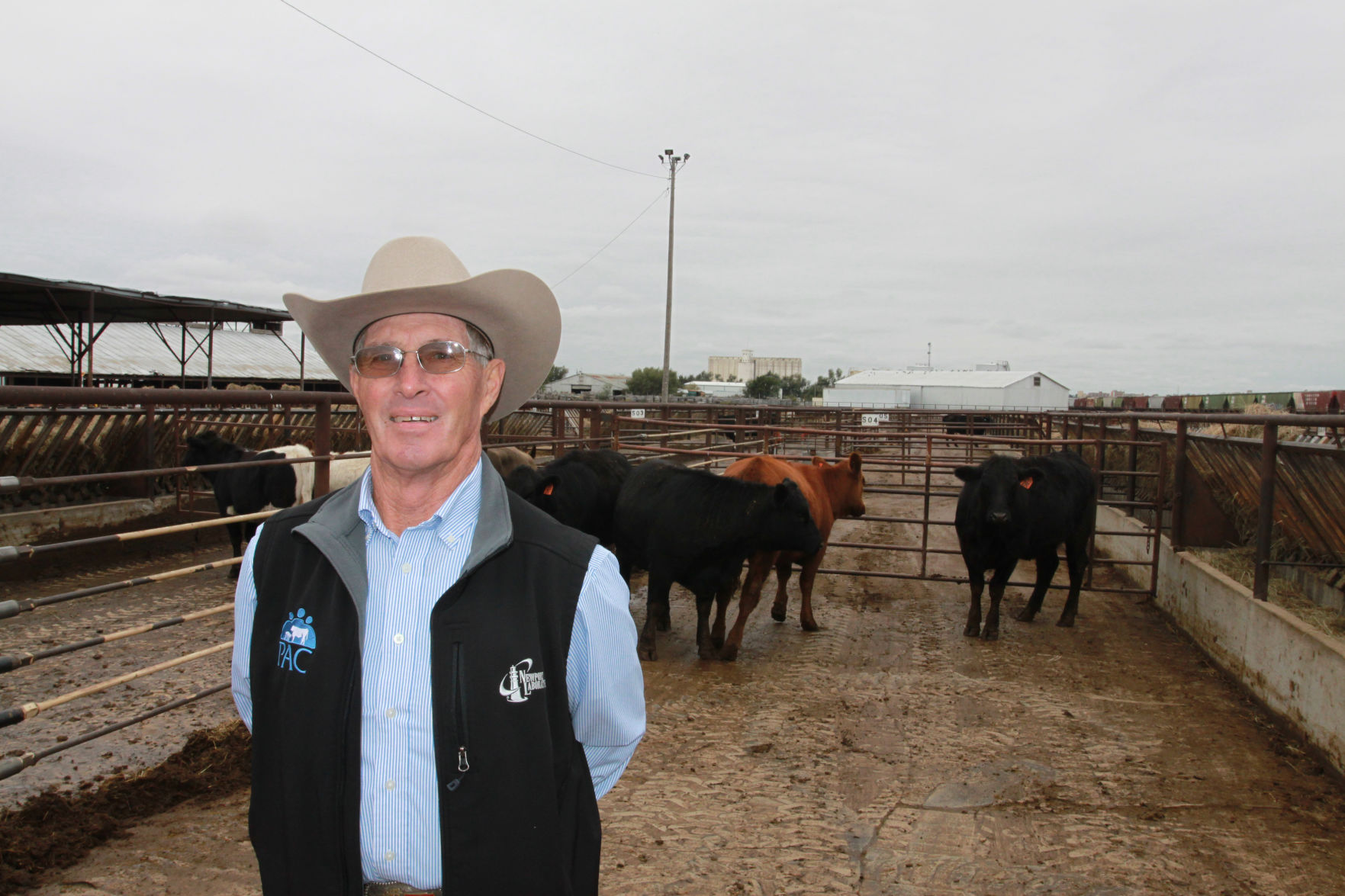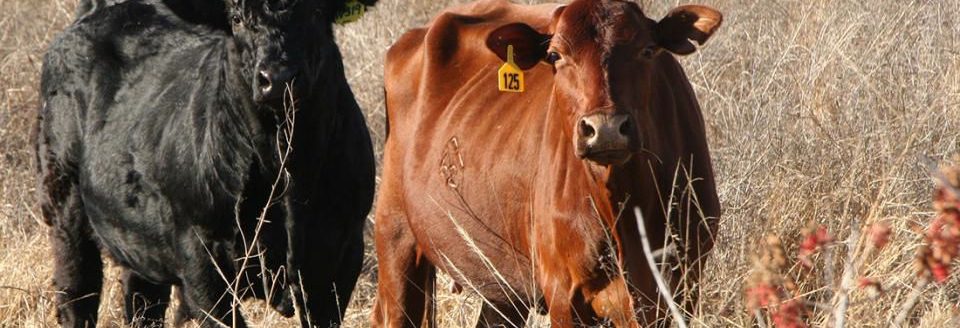Many years ago working cattle did not bring much joy to Tom Noffsinger. He could recall large groups of men carrying whips, canes and electronic prods and they applied their disciplinary ways to cantankerous cattle that were in no mood to cooperate.
Over time the veterinarian became frustrated, too, because the livestock owner saw an increased costs of inoculations and vaccinations as a result of cattle that were agitated and uptight. Those medicinal costs are expensive.
Noffsinger wondered if there was another way and he was fortunate to meet the late Canadian livestock handler Bud Williams about 18 years ago. Williams taught him, for example, that by working with the cattle, ranchers could settle down weaned calves in an hour rather than listening to them bawl for many hours.
“I was blessed to work with Bud,” he said. “He was the genius of stockmanship. He taught me that people can change cattle behavior.”
Williams’ expertise and communication skills were incorporated with techniques gleaned from Brazilian and Australian handlers. This knowledge brought Noffsinger and other advocates of low-stress handling practical ways to teach today’s generation of herdsmen.
“Every thing we do on a daily basis. We can work together with cattle and it shows.”
The cattle, he said, have more confidence, they are healthier, stay hydrated and are easier to handle.
“Any time we have contact and interaction with livestock it is either going to be better or worse. It is never going to be the same,” Noffsinger said. “If we do it right, there is an opportunity to be uniform in how we handle livestock—from conception to harvest. If we do all of this well it will provide outstanding results.”
Most losses, including injuries and death, are caused in the transport process. Every opportunity for the rancher, feedlot owner or feedlot employees to work with the cattle will make the handling process safer and more efficient.
“The key is to understand animals at a higher degree and understand they have a keen sensory system,” Noffsinger said. “Using the tools of handler position, distance, angles and speed to create voluntary cattle activity we can work and train these animals. Our dream is that they perceive it is safe. They can trust us in the truck, the pasture or the feedlot. When we have people and we have cattle doing things because they want to and not because they have to, it is a whole different world.”
Low stress handling directly impacts labor shortages on the High Plains.
“Actually these kind of things have helped the efficiency of our labor force so much. Before I met Bud, I would take eight or 10 people to gather (cattle) in these big pastures,” the veterinarian said. “Now I don’t want anyone but Diane (his wife) and myself to do it.”
Harnessing herd movement is key as cattle look to people for guidance. They are followers by nature. They love to be together, he said. When a herd is moving in an orderly fashion it is like a string.
“The biggest revelation Bud taught us was to work from the front and not from the back,” Noffsinger said.
The veterinarian recalled the early years of his practice.
“Our responsibility is to be available to their eyes. I have looked under a lot of cattle tails and had yet to see an eye,” he quipped when he reflected back.
“I’m just starting to learn,” he said with modesty. “When I started I did not care whether a cow moved this way or that way. Now I know if you want to make a difference and to get them to move the right way you need to have them make a counter-clockwise movement.”
It is all tied to how the cattle tracks movement from its left eye and then reacts based on that information being transferred to its brain, the veterinarian said, adding cattle are very direction sensitive.
At seminars he sees livestock handlers at all stages and he welcomes them all.
Attendants of his low cattle stress seminars vary from those who have extensive knowledge and want to brush up on their techniques to first-timers.
He likes to share a story with feedyards he has worked with.
“We’ve almost eliminated electric prods, paddles,” he said. Today they are using position techniques to be efficient and it carries to all levels of livestock production.
“My dream is to be able to use these skills to be able to place grazing animals in an underutilized part of the pasture and convince them to graze there, go back to get water and return. Bud’s greatest contribution in Idaho and Nevada was to teach ranchers rotational grazing and how to use riparian areas without fences. I’m getting better at it. It is another example of getting cattle to perceive and where you want them to be.”
Efficiency gains
Improved cattle handling can trigger “vast improvements” in first conception rates in breeding heifer development, reduce neo-natal health issues with increased nursing frequency and increase arrival feed intake levels on newly arrived weaned cattle.
“You could never get calves to eat for three days,” Noffsinger said. “Now they can eat two percent of their body weight on day one.”
Low stress handling applies to other livestock, he said, as he talked about how it works with pigs, sheep and horses.
“It is engrained in these animals to have their mothers guide them,” he said.
Natural horsemanship has taught Noffsinger and other followers of low-stress handling techniques about the similarities in all livestock.
Much like running a business, he said, all of people in the organization, from top to bottom, including the owners, must buy into the concept.
For additional information, visit www.creatingconnections.info.
Dave Bergmeier can be reached at 620-227-1822 or [email protected].
((sidebar))
About Dr. Tom
By Dave Bergmeier
Today, Tom Noffsinger, DVM, a Colorado native and a graduate of Colorado State University, lives in Benkelman, Nebraska.
He is among the growing number of leaders who teach low-stress handling of livestock. The veterinarian once owned animal clinics in Benkelman and Wray, Colorado. Since 2005, he has been involved in Production Animal Consultation a network of 10 veterinarians who help with the care of 1.4 million head of cattle a month. Customers primarily are in Washington state, Colorado, Kansas, Nebraska and South Dakota. PAC also serves customers in Canada and Australia.
The network offers feedlot consultation, facility and design, care giving and training and team building. The firm also has an information technology staff and offers research services.
Winter Livestock, Dodge City, Kansas, and Merck Animal Health sponsored Noffsinger’s presentation in Dodge City Oct. 11. His focus was on the relationship between people and cattle. He credits Merck Animal Health for its forward thinking on how to be stewards of resources and livestock.
Dave Bergmeier can be reached at 620-227-1822 or [email protected].




